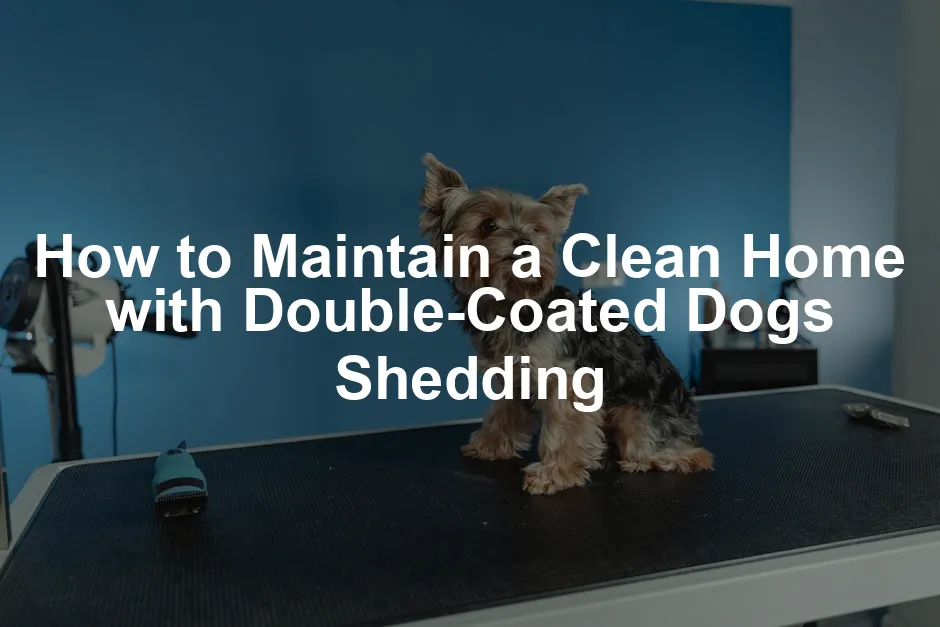Introduction
Keeping a clean home can be tough with double-coated dogs. Their joy and companionship bring so much happiness. However, shedding can create a constant battle with dog hair. It’s important to have effective strategies to manage their fur and keep your living space tidy.
Summary and Overview
In this guide, you’ll discover practical tips to manage shedding from double-coated dogs. We’ll focus on routine grooming, using the right tools, and effective cleaning techniques. Regular grooming helps minimize loose fur while maintaining a healthy coat. A clean home benefits both you and your furry friends, fostering a healthier environment for everyone. Let’s dive into these strategies to keep your home looking its best despite shedding challenges.
Understanding Double-Coated Dogs
What is a Double Coat?
Double-coated dogs have two layers of fur: the undercoat and the topcoat. The undercoat consists of soft, dense fur that helps regulate temperature. It keeps your dog warm in cold weather and cool during heat. The outer coat, or topcoat, consists of longer, protective hairs that repel moisture and dirt.
Common double-coated breeds include German Shepherds, Golden Retrievers, Siberian Huskies, and Akitas. These breeds shed more than others due to their unique coat structure. According to recent statistics, about 33% of dog owners have double-coated breeds, making shedding a common concern. Understanding the purpose of each coat layer can help you manage shedding effectively while ensuring your dog stays comfortable and healthy.

Grooming Techniques
Regular Brushing
Regular brushing is key to managing shedding in double-coated dogs. This practice helps remove loose hair and prevents matting. The right tools make all the difference! Undercoat rakes and slicker brushes are excellent for reaching the dense undercoat, which is where most shedding occurs. Get your hands on a quality undercoat rake to tackle that dense fur like a pro!
During shedding seasons, aim to brush your dog daily. In spring and fall, their coats undergo significant changes, so increased grooming is essential. In the off-seasons, brush at least once a week.
For effective brushing, start at the neck and work your way down. Use gentle strokes to avoid hurting your dog. Holding the skin taut while brushing can make the process easier. Remember, a good grooming routine not only keeps fur at bay but also promotes a healthy coat by distributing natural oils.

Bathing Best Practices
Bathing your double-coated dog is vital for shedding control. Regular baths help remove loose fur and dirt, keeping your home cleaner. Aim to bathe your dog every 4 to 6 weeks, or more frequently during heavy shedding periods.
Use a gentle, moisturizing shampoo that suits your dog’s skin type. After washing, apply a conditioner to keep the coat soft and hydrated. This step is crucial, especially for thick undercoats, as it helps prevent dryness and breakage. A de-shedding shampoo can work wonders!
Post-bath, ensure to brush your dog’s coat while it’s damp. This technique helps remove any remaining loose hair and prevents matting. Drying your dog thoroughly is just as important. Consider using a pet dryer or a towel to remove excess moisture while also eliminating loose fur. With these bathing best practices, you can greatly minimize shedding and maintain your dog’s coat health.
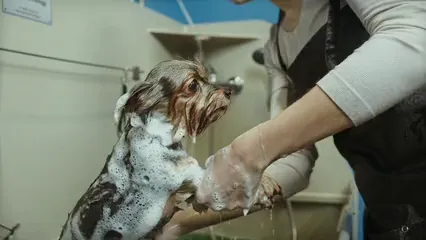
Effective Cleaning Strategies
Daily Maintenance
Maintaining a clean home with shedding dogs requires daily routines. These routines help manage the fur that accumulates everywhere. Quick cleanups are vital, especially in busy households. Think about incorporating cleaning tasks into your daily activities. For example, you can quickly pick up hair after dinner.
Use efficient cleaning tools like vacuums or lint rollers. A vacuum designed for pet hair can be a game changer. Lint rollers are perfect for quick touch-ups on clothes and furniture. Keep one in your car for unexpected situations. Consider grabbing a robot vacuum to automate the chaos!
The best times to clean include right after your dog has been outside or after meals. Regular cleaning prevents hair buildup, making it easier to maintain order. Emphasizing daily cleaning ensures your home remains welcoming and tidy, even with furry companions.

Vacuuming Techniques
Choosing the right vacuum is crucial for managing pet hair. Look for vacuums designed specifically for pets. They often have powerful suction and specialized brushes that help capture hair effectively. A pet hair vacuum cleaner can be a lifesaver!
Aim to vacuum your home at least once a week, or more frequently during shedding seasons. Pay special attention to high-traffic areas and places where your dog spends time. Use vacuum attachments for furniture and your car, ensuring every corner is hair-free.
Consider adding a robot vacuum to your routine. These handy devices can run daily, keeping your floors clear without much effort. They’re great for maintaining cleanliness while you focus on other tasks. With the right vacuuming techniques, managing dog hair becomes much easier, allowing you to enjoy your furry friends more.
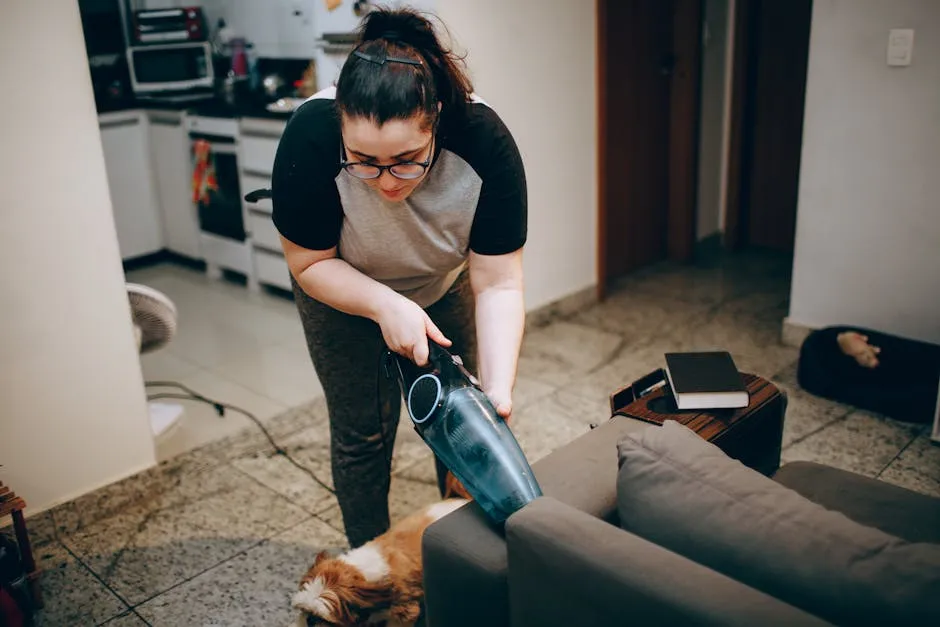
Nutrition and Health
Diet’s Role in Shedding
Did you know that your dog’s diet plays a significant role in coat health? A balanced diet can reduce shedding and improve your dog’s overall well-being. Hydration is essential, as water helps maintain healthy skin, reducing flakes and hair loss.
Fats are crucial too! Omega-3 and Omega-6 fatty acids are beneficial for your dog’s skin and coat. These good fats can help keep the coat shiny and reduce excessive shedding. You might consider adding Omega-3 fish oil supplements or flaxseed oil supplements to your dog’s meals. These supplements can make a noticeable difference.
A poor diet can lead to dry skin and increased shedding. Dogs lacking essential nutrients may experience dull coats and excessive hair loss. To improve coat condition, include high-quality proteins, vegetables, and healthy fats in their meals. Regularly monitor your dog’s food for quality ingredients. A nutritious diet is key to keeping shedding at bay and ensuring your furry friend stays healthy.
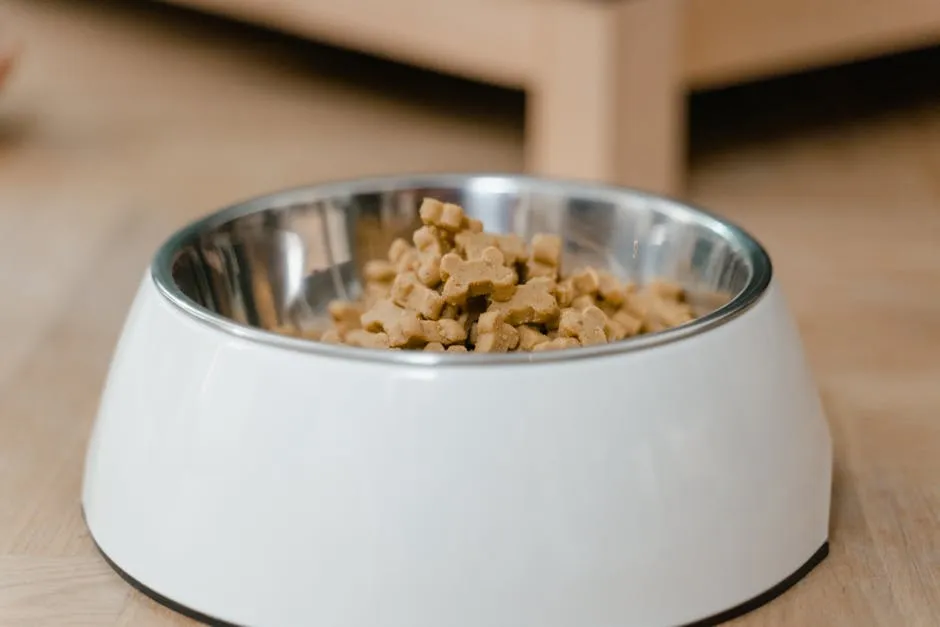
Tools and Products
Must-Have Grooming Tools
When managing shedding, having the right grooming tools is vital. Start with an undercoat rake. This tool is excellent for reaching the dense undercoat, effectively removing loose hair. Use it gently, starting from the neck and working downwards.
Next, invest in a slicker brush. This brush is perfect for removing mats and tangles from the topcoat. It’s ideal for finishing touches after using the rake. A good grooming glove can also help collect loose hair while providing a calming massage.
Don’t forget about de-shedding shampoo! These specialized shampoos help lift and remove dead hair during baths. Look for conditioners that moisturize while preventing breakage. Quality grooming tools make a significant difference in maintaining a clean home and a healthy coat for your dog. Remember, consistent grooming not only reduces shedding but also strengthens your bond with your pet.
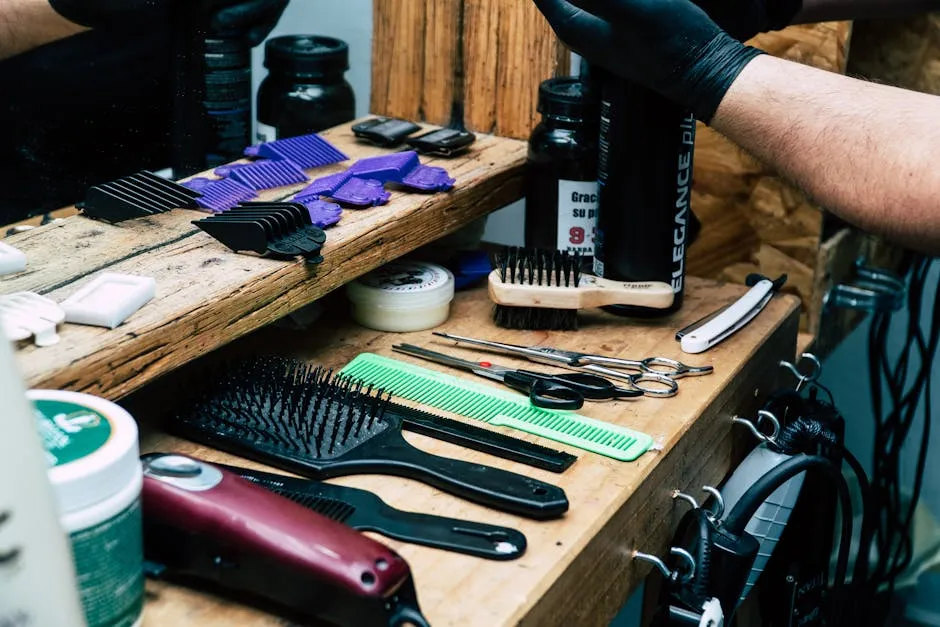
Conclusion
Maintaining a clean home with double-coated dogs can be a challenge. However, by implementing regular grooming and effective cleaning strategies, you can significantly reduce the fur in your space. Remember to brush your dog often, bathe them appropriately, and keep a consistent cleaning routine. Embrace the joys of having these lovable companions, as their shedding is a small price to pay for the happiness they bring. Enjoy your time with your furry friends while keeping your home tidy!

FAQs
What are the best grooming practices for double-coated dogs?
Regular brushing is crucial for double-coated dogs. Use an undercoat rake and a slicker brush. Aim to brush your dog at least once a week. During shedding seasons, increase brushing to every day. This helps to remove loose hair and prevents matting.
How often should I bathe my shedding dog?
Bathing frequency depends on your dog’s activity level and coat condition. Generally, bathe your dog every 4 to 6 weeks. If they play outside often or get dirty, consider bathing them more frequently. Avoid over-bathing to prevent skin dryness.
What are the signs of excessive shedding?
Excessive shedding can be identified by a noticeable increase in hair around your home and on your dog. If you see bald patches, skin irritation, or your dog seems uncomfortable, consult a vet. These could indicate underlying health issues.
Can diet affect my dog’s shedding?
Yes, a balanced diet plays a significant role in coat health. Proper nutrition supports skin health and can minimize shedding. Include Omega-3 and Omega-6 fatty acids in your dog’s diet for a shiny coat. Hydration is also key for reducing shedding.
What tools should I use to manage dog hair in my home?
Effective tools include a pet vacuum designed for hair, lint rollers for quick cleanups, and a rubber brush for furniture. Consider a robot vacuum for daily maintenance. These tools will help you keep your home free of dog hair.
What breeds are considered double-coated?
Common double-coated breeds include German Shepherds, Golden Retrievers, Siberian Huskies, and Alaskan Malamutes. These breeds have both an undercoat and a topcoat, which contribute to their shedding.
How can I minimize shedding during peak seasons?
During peak shedding seasons, increase your dog’s grooming frequency. Brush them daily and consider using de-shedding tools. Maintain a clean home with regular vacuuming to manage hair effectively. This will help keep shedding under control during spring and fall.
To effectively manage shedding in double-coated dogs, consider learning how to groom double-coated dogs to reduce shedding.
Please let us know what you think about our content by leaving a comment down below!
Thank you for reading till here 🙂
All images from Pexels

